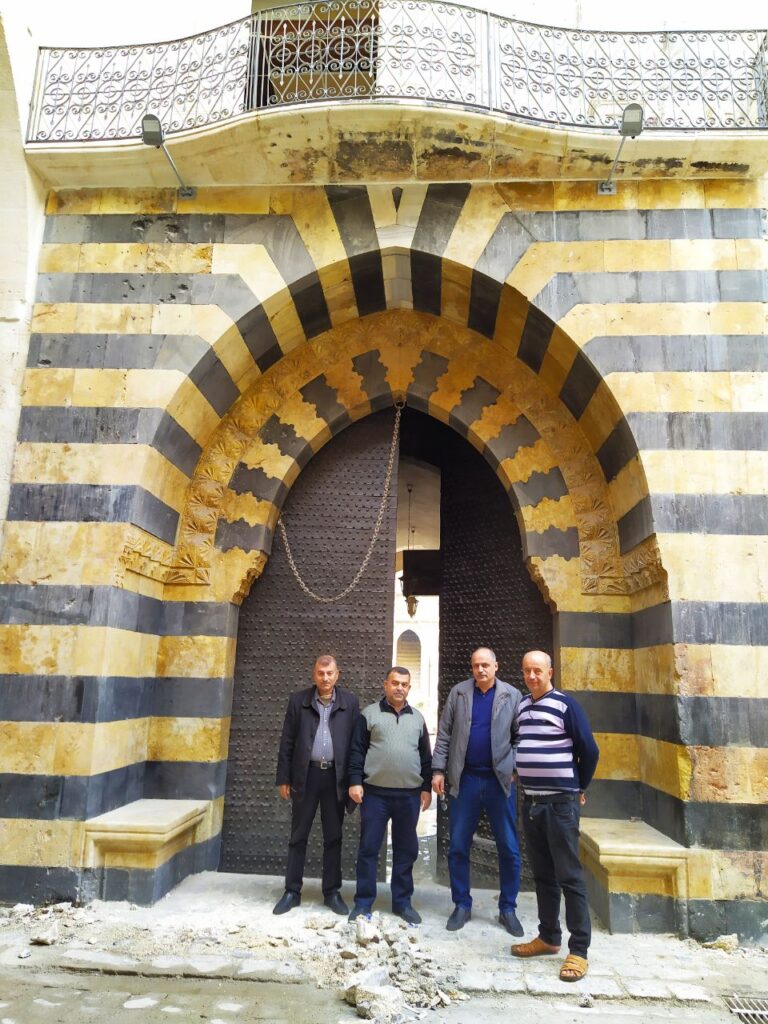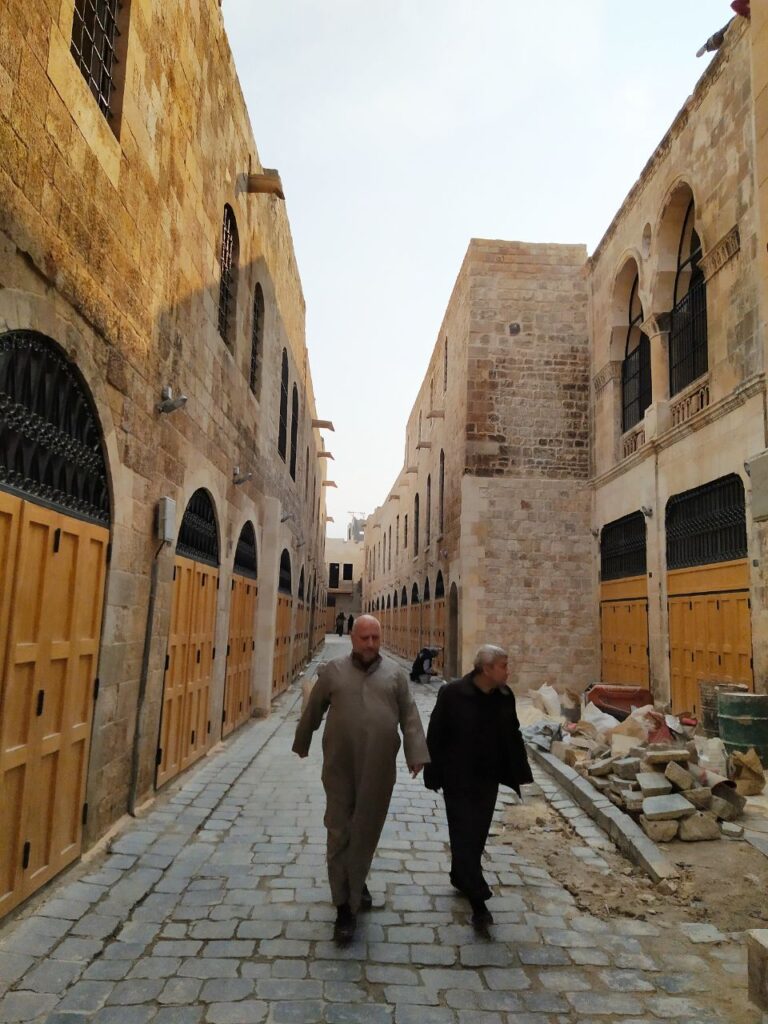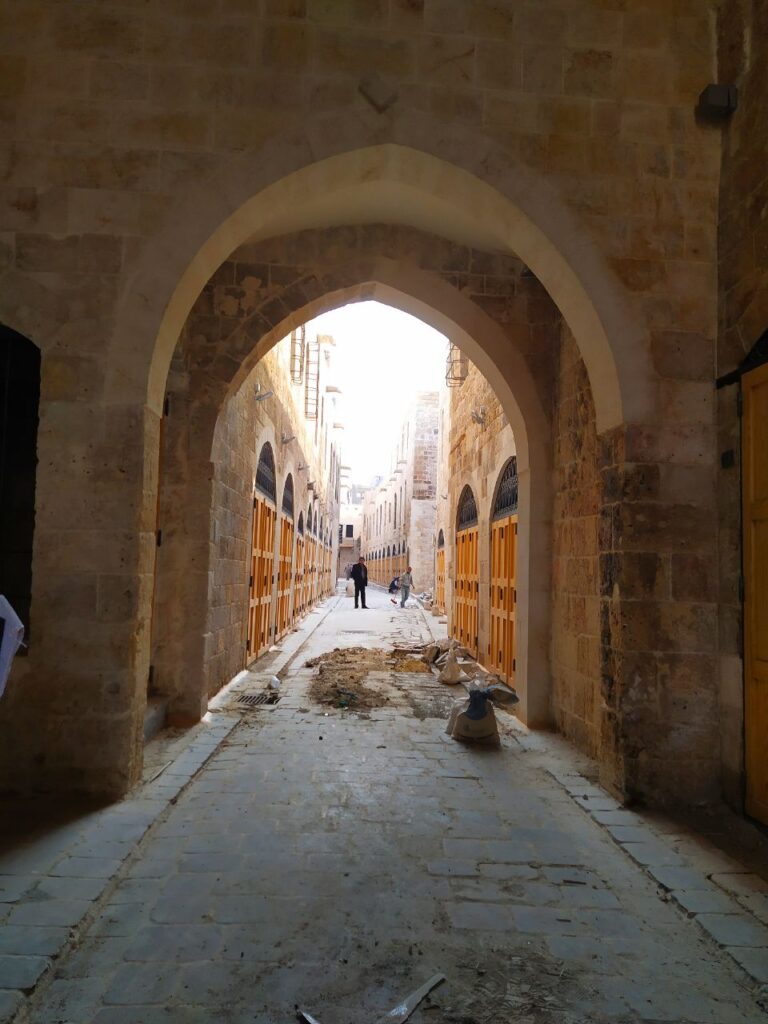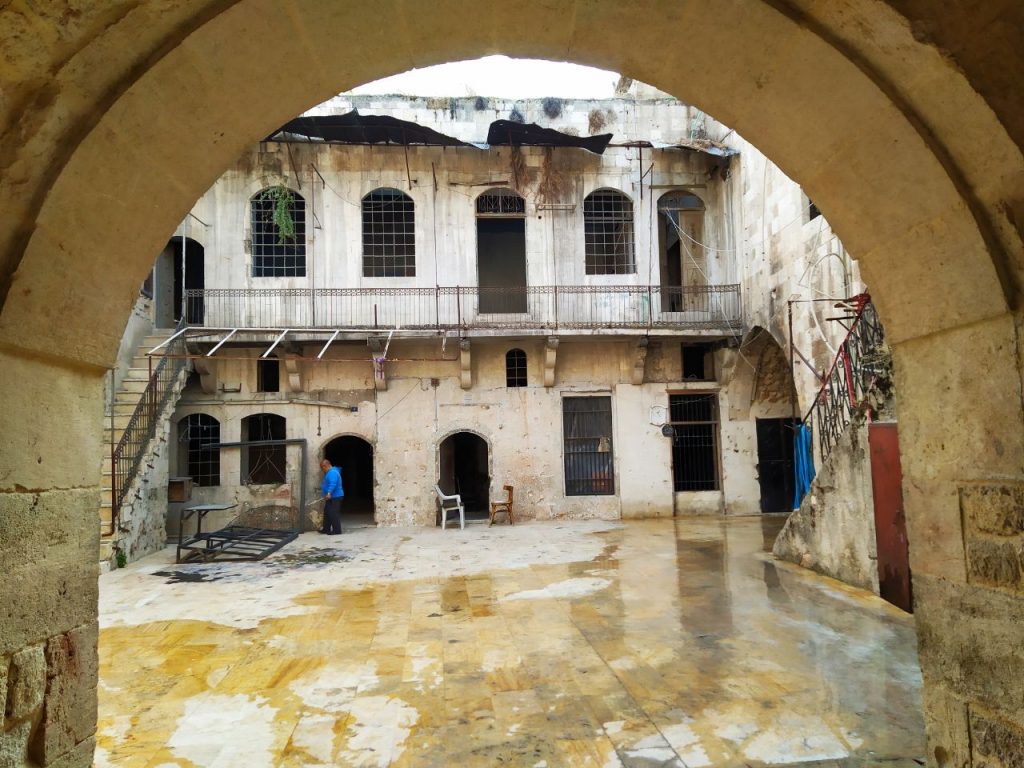Khan al-Harir (The Silk Khan) is located in the heart of Old Aleppo and stands as one of the city’s most iconic historical caravanserais, reflecting its flourishing commercial life during the Ottoman period. This monumental structure was built in 1574 by order of Dervish Pasha, then governor of Damascus, as a waqf for the Dervishiyya Mosque. Initially named “Qaysariyya of Dervish Pasha,” it later became known as “Khan al-Harir” due to its specialization in the trade of silk and textiles.
The khan features a near-square layout covering an area of approximately 2,500 square meters, with 27 covered shops lining its exterior walls. Entering from the northern façade, visitors are welcomed into a spacious open-air courtyard of around 300 square meters, surrounded by rooms that once served as workshops and silk trading spaces. The courtyard is paved with dark basalt stones and centered by a rectangular basin, enhancing both its aesthetic and functional appeal.
The building follows the classic Damascene architectural style, with two stories accessed via staircases flanking the main entrance. It is distinguished by 44 domes that span the passageways, while the walls are adorned with ablaq masonry—alternating layers of black and white stone—a hallmark of Mamluk-Ottoman architecture.
In recent years, Khan al-Harir underwent extensive restoration involving experts in traditional architecture. The restoration aimed to repurpose the khan as a contemporary commercial and cultural hub while retaining its historic essence. Emphasis was placed on conserving original features, including the stone carvings and elegant arches that embellish the structure.
Today, Khan al-Harir functions as a vibrant center for textile and fabric trade, attracting both tourists and locals. It serves as a living testimony to Aleppo’s rich commercial legacy and architectural heritage.










